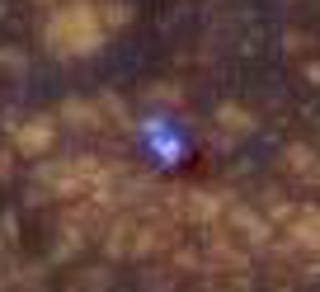Take a good look at this photo. Notice the pale blue dot sitting at the center of the photo. Care to guess what it is?

Amid Mars’ rocky mountainside terrain, NASA’s Mars Reconnaissance Orbiter caught a glimpse of a terrestrial colleague. That’s none other than the famous Curiosity rover which for the past five years has been exploring Mount Sharp, an area which is particularly promising for finding Martian microbial life. Mount Sharp towering three miles above the ancient lakeshore of Gale Crater.
“Gale crater once held a lake with water that we would even have been able to drink, but we still don’t know how long this habitable environment endured,” said Jens Frydenvang, a scientist at Los Alamos National Laboratory and the University of Copenhagen. “What this finding tells us is that, even when the lake eventually evaporated, substantial amounts of groundwater were present for much longer than we previously thought—thus further expanding the window for when life might have existed on Mars.”

The car-sized rover was climbing up lower Mount Sharp on June 5, 2017, when it was surprised by the orbiter’s High Resolution Imaging Science Experiment (HiRISE) camera.
Curiosity isn’t actually that blue though. The photo was doctored so the high contrast could show different materials on the planet’s surface better.


